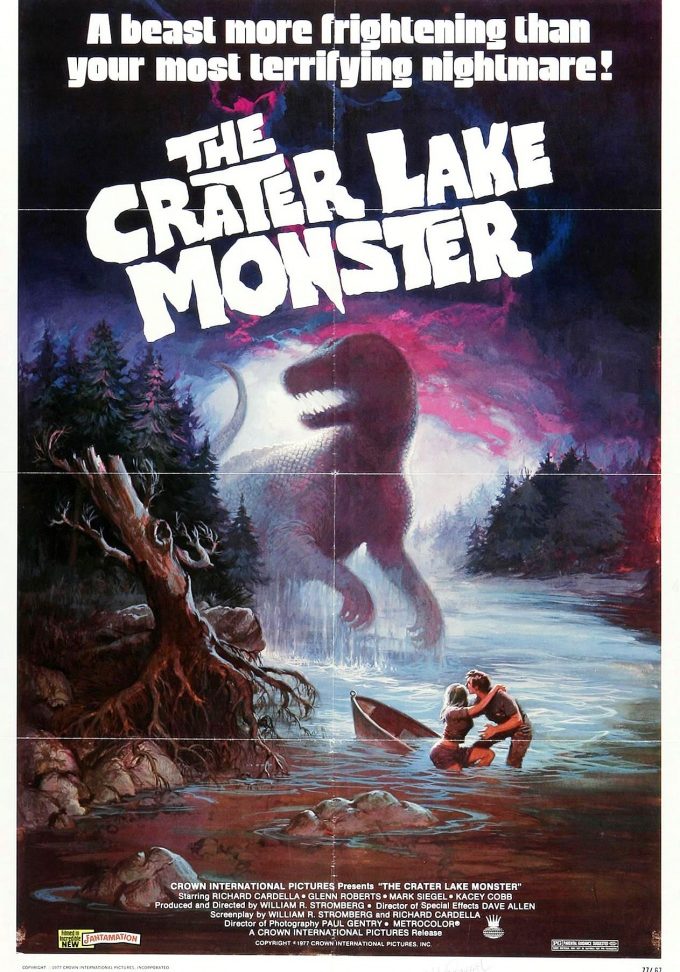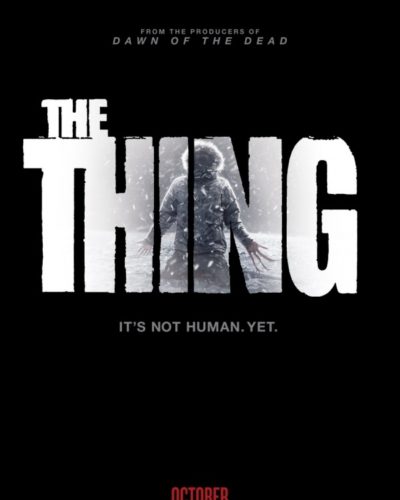A Beast Awakens from the Depths: ‘The Crater Lake Monster’
In the tranquil setting of a small town, something lurks beneath the serene surface of Crater Lake, waiting to unleash terror. Directed by William R. Stromberg, “The Crater Lake Monster,” a 1977 release, may not be a jewel in the crown of horror cinema, but it certainly takes a stab at classic monster movie motifs. Before delving into the abyss of this creature feature, let’s allow ourselves a brief paddle in the shallow end with a spoiler-free synopsis. When a meteor crashes into Crater Lake, it awakens a prehistoric beast. Local residents are soon confronted with a series of mysterious disappearances, leading to a monstrous discovery that would send a chill down any spine.
Chills and Thrills: Crafting a Classic Horror Ambience
The atmosphere and tone of “The Crater Lake Monster” are throwbacks to a bygone era of horror, harkening back to 1950s creature features. With suspense taking a backseat to more direct horror tactics, the film relies heavily on the shock value of its prehistoric antagonist. Suspense is less a build-up and more a waiting game, as scenes seemingly aim to postpone the inevitable appearance of the lake-dwelling beast. Although the fear factor may not hold up to modern standards, there’s an undeniable charm in the film’s nostalgic approach to terror.
Director Stromberg wades through a well-trodden path of tension building, banking on the monster’s eventual reveal to deliver the film’s quota of horror. The pacing might stagger like a creature learning to walk, but there’s merit in the director’s unwavering commitment to a time-honored formula.
Regarding cinematography and visuals, “The Crater Lake Monster” makes a considerable effort with the resources at its disposal. The lighting is largely functional, aiming to showcase rather than shroud, which is perhaps a misstep in a genre that often benefits from the ominous nature of darkness. The color palettes are reflective of the era, with naturalistic tones that anchor us in the film’s rural milieu. While camera angles and special effects are unlikely to earn any accolades, they possess a certain vintage appeal – especially the stop-motion animation of the monster, which nostalgically recalls the work of Ray Harryhausen.
The soundtrack and sound effects are characteristic of ’70s horror films, but they neither significantly enhance nor detract from the terror. Oddly, there are moments when the absence of sound may have served better in ramping up the fear, but these opportunities seem overlooked in favor of a more is more’ philosophy.
Fear Performance: On-Screen Terror and Character Believability
Performance-wise, “The Crater Lake Monster” does not break new ground. The characters might seem thinly sketched, with reactions to terror not always hitting the believable mark. That said, the cast embodies the classic archetype roles with enough conviction to keep the viewer engaged, if not entirely invested in their fates.
In terms of horror elements, the film dips its toes into the monster-horror subgenre, bringing with it all the expected conventions: a misunderstood creature, a smattering of clueless townsfolk, and a sense of isolation. While by no means revolutionary, “The Crater Lake Monster” pleases with its predictability and contributes to the genre’s storied history.
Frightening the audience seems a secondary aim behind showcasing the stop-motion creature. Gore is minimal, and there’s a reliance on the shock of the monster itself rather than psychological terrors or edge-of-your-seat suspense. As far as effectiveness goes, it’s a gentle creep rather than a heart-stopping plunge into fear.
Monstrous Metaphors and Retro Reflections
Deep beneath the film’s surface lurk scant themes or commentary. Instead, “The Crater Lake Monster” plays more as a straightforward monster romp without much in the way of social undercurrent. While one could stretch to find allegories about man’s interaction with nature or fear of the unknown, these seem more like incidental ripples than intentional thematic dive.
For modern horror enthusiasts, the film might not pack the punch of adrenaline they’ve become accustomed to. However, for those with an appetite for nostalgia and an appreciation for the rudimentary scares of the genre’s past, there’s fun to be had here. It’s a perfect fit for B-movie buffs or those looking to indulge in some low-stakes retro horror.
When comparing “The Crater Lake Monster” to its contemporaries, it lacks the finesse of Spielberg’s “Jaws” or the conceptual depth of Ridley Scott’s “Alien,” but it stands as a testament to the enthusiastic endeavor of independent filmmaking and practical effects work.
In the Wake of the Beast: Final Thoughts
“The Crater Lake Monster” dives headlong into the depths of ’70s horror, emerging with a creature that is less terrifying and more quaint by today’s standards. Its strengths lie in its willingness to embrace the stop-motion monster-making of yesteryear, while its weaknesses manifest in underdeveloped characters and a scattered approach to building suspense.
Whether you should watch this film depends on your disposition towards classic horror. Die-hard fans of the genre’s golden age or those curious about the evolution of monster movies might find value in this lake monster’s tale. Newcomers to horror or those with a preference for the polish and complexity of contemporary horror may want to dip their toes elsewhere.
Viewer discretion is advised due to some instances of mild violence and peril, typical of the era’s PG-rated films. In the end, “The Crater Lake Monster” swims in the shallows of horror greatness, but for some, that’s just the right depth for an enjoyable evening of nostalgic fright.




